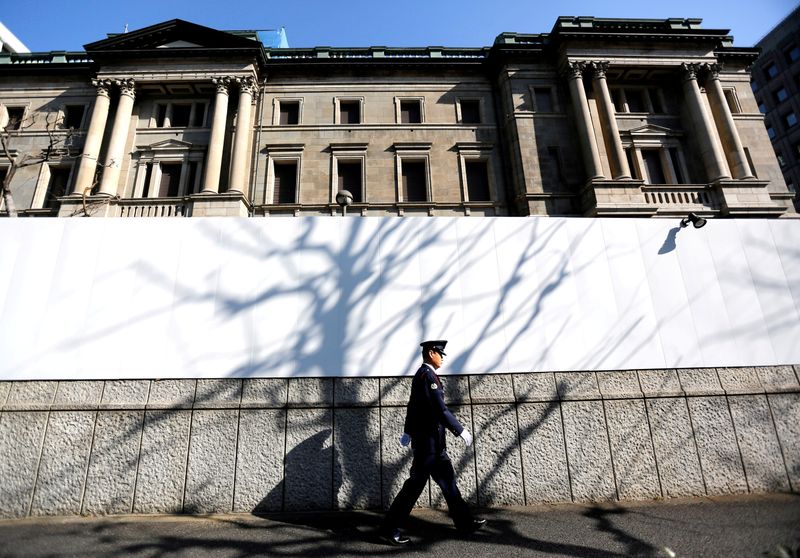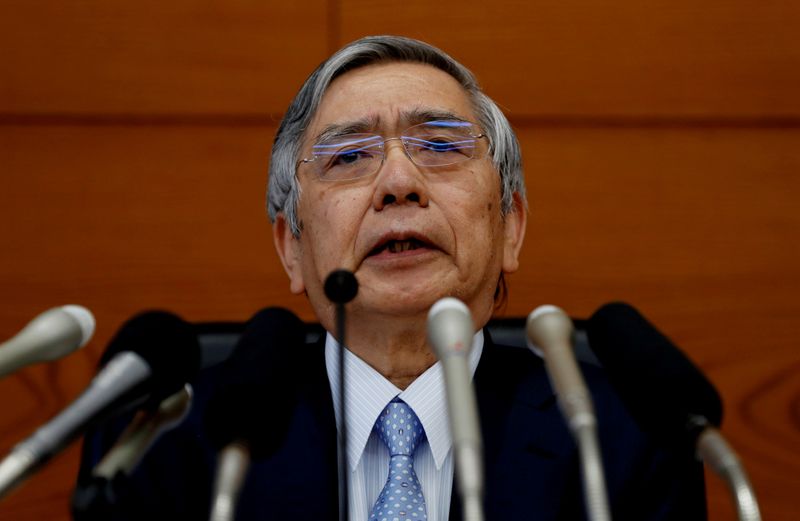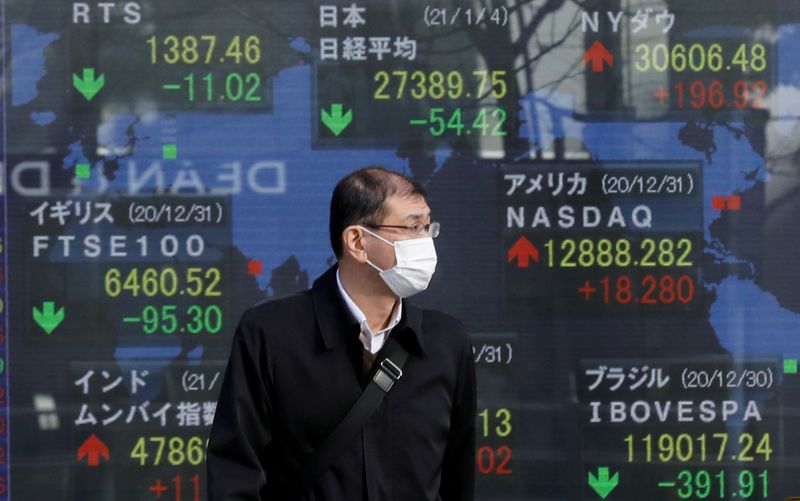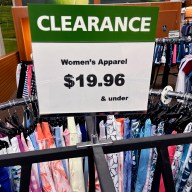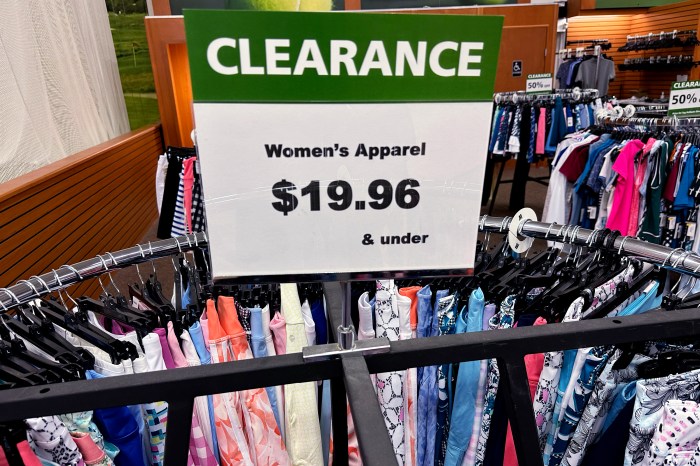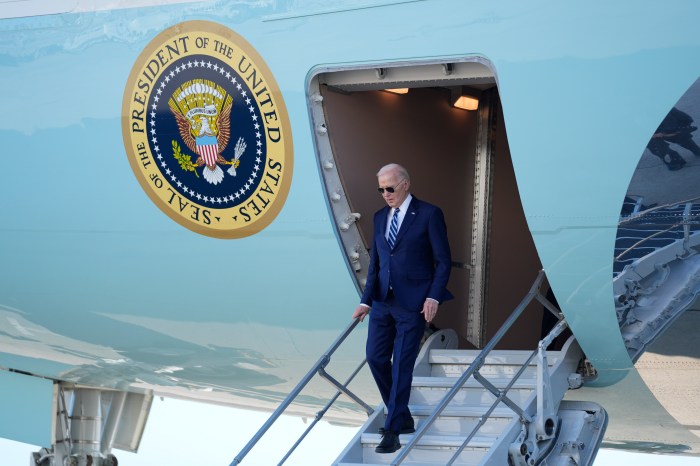TOKYO (Reuters) – The Bank of Japan is dropping hints it will consider allowing long-term interest rates to deviate further from its 0% target, a move that could undermine the purpose of its policy aimed at controlling the shape of the yield curve.
BOJ Governor Haruhiko Kuroda told reporters on Thursday the idea could be among options discussed in March, when the bank will review its tools to make them “sustainable and effective.”
The move would highlight the difficulty of maintaining yield curve control (YCC) as deflationary pressures from the coronavirus crisis threaten to prolong the BOJ’s already protracted battle to hit its elusive 2% inflation target.
“YCC wasn’t intended to last this long. With the pandemic, the BOJ must now find a way to forever sustain this policy as inflation won’t hit 2% for years,” said Kazuo Momma, a former BOJ executive with experience drafting monetary policy.
Markets have been rife with speculation the BOJ may widen the implicit band under which it allows 10-year bond yields move around its 0% target, from the current 40 basis points.
Widening the band, or clarifying the BOJ’s intention to let market forces drive yield moves more, would help bring life back to a market numbed by years of heavy-handed intervention.
By allowing yields to rise more, the BOJ could also address the main side-effect of YCC: excessive falls in super-long yields that hurt returns for pension funds.
“As our monetary easing is prolonged, we’ll aim to make daily operations of YCC more sustainable,” Kuroda said on Thursday, suggesting that loosening the BOJ’s grip on yields would be a key purpose of the March review.
When the BOJ last widened the band in 2018, 10-year yields crept up to 0.16% that year before slumping to near -0.3% in 2019.
“The BOJ’s decision will be based on the need to keep yields around 0%, and the cost of doing so such as distoring market functions,” said a source familiar with the bank’s thinking.
MARKETS DOUBT EFFECT
Some analysts question the effect. There is no guarantee bond yields will rise under a wider band, as many investors bet the BOJ will maintain ultra-loose policy for years to come.
(Click here for an interactive graphic of Japan’s 10-year government bond yields since early 2016: https://tmsnrt.rs/2May3Ye)
Yields on 10-year JGB’s have moved in tight range https://graphics.reuters.com/JAPAN-ECONOMY/BOJ-YCC/rlgpdgjravo/chart.png
“Long-term rates won’t rise much unless markets begin to price in prospects of an exit from ultra-easy policy, which isn’t going to happen any time soon,” said Izuru Kato, chief economist at Totan Research and a long-time BOJ watcher.
Softening the yield target would also take the teeth out of YCC and signal a setback for Kuroda’s stimulus programme, which initially used clear numerical targets to communicate the bank’s policy intentions, said former BOJ policymaker Takahide Kiuchi.
“The BOJ is trying to water down both its asset-buying and interest rate targets, undermining the whole concept of YCC,” he said.
(Click here for an interactive graphic of increases in the BOJ’s long-term Japanese government bond holdings since 2016: https://tmsnrt.rs/3iyIctE)
Increase in the BOJ’s long-term JGB holdings https://graphics.reuters.com/JAPAN-ECONOMY/BOJ-YCC/jznvnmlyepl/chart.png
Allowing yields to rise further also risks giving markets the impression the BOJ is dialing back stimulus, something it wants to avoid at all costs.
In softening its yield target, the BOJ could add forward guidance that pledges to keep long-term rates around zero until inflation nears 2%, said Momma.
“The BOJ will probably come up with a package of measures which, as a whole, would appear as if it’s enhancing the effect of YCC.”
(Reporting by Leika Kihara; additional reporting by Daniel Leussink; Editing by Toby Chopra)

